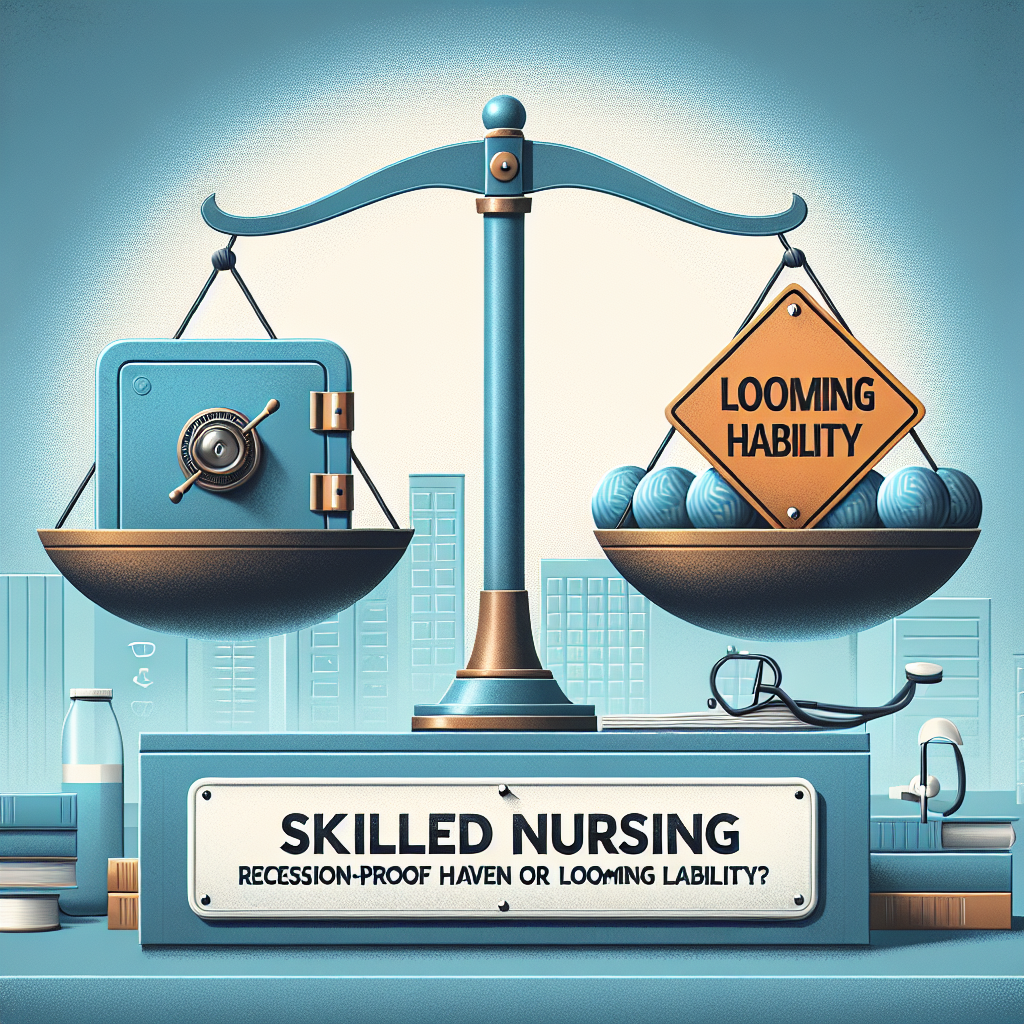New York, NY—As economic clouds gather and fears of a recession loom, investors and health care providers are scrutinizing the skilled nursing sector, traditionally viewed as a recession-proof haven due to its critical nature and enduring demand. However, recent trends and expert analyses suggest that, contrary to popular belief, skilled nursing facilities may not be entirely shielded from economic downturns, potentially positioning them as a looming liability rather than a safe harbor.
Amid rising operational costs and a challenging reimbursement landscape, skilled nursing homes are navigating a precarious balancing act. According to a recent report by the National Health Care Association, “more than 65% of skilled nursing facility residents’ days are paid for by Medicaid at rates below the cost of care.” This statistic underscores the financial strain many facilities face, magnified by the current economic uncertainty.
The pandemic has exacerbated existing vulnerabilities within the skilled nursing sector, highlighting issues such as staffing shortages, increased regulatory scrutiny, and the escalating cost of compliance and patient care. These challenges have squeezed margins, threatening the sustainability of operations for some facilities and prompting a reevaluation of the so-called recession-proof narrative.
In an interview, Dr. Samantha Greene, a health care economist, remarked, “While the demand for skilled nursing care remains fundamentally strong, driven by an aging population, the financial underpinnings of many facilities are fragile. The misconception that all health care sectors thrive, or at least remain untouched during economic downturns, overlooks the nuanced financial realities that these services face.”
Investors, previously buoyed by the sector’s perceived stability, are now reassessing their positions. The realization that skilled nursing homes may not be as insulated from economic turbulence as once thought is leading to increased caution. This shift in sentiment could potentially impact the flow of capital into the sector, further amplifying financial pressures.
From a policy perspective, the current environment underscores the need for a more sustainable funding model for skilled nursing facilities. As public and private payers grapple with fiscal constraints, the sector’s reliance on Medicaid as a primary source of reimbursement poses a significant vulnerability in the face of budgetary pressures, potentially leading to reduced rates or tighter eligibility criteria.
The overarching question now is whether skilled nursing can adapt to these changing economic and operational dynamics or if it will become a cautionary tale of vulnerability in the health care sector. As the industry stands at this crossroads, the path forward remains uncertain, challenging the longstanding belief in its recession-proof status and highlighting the need for strategic adaptation to navigate the murky waters of economic instability.


